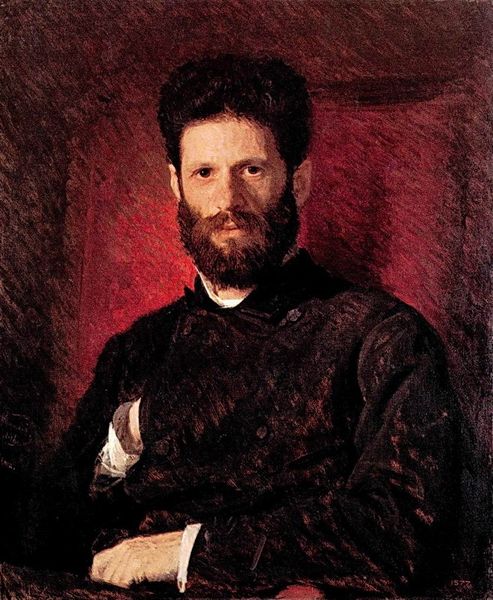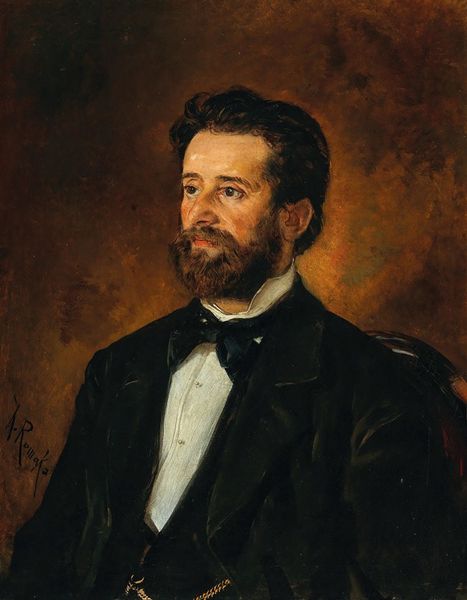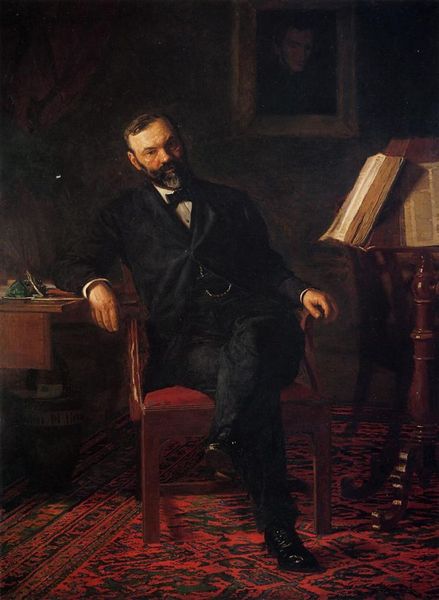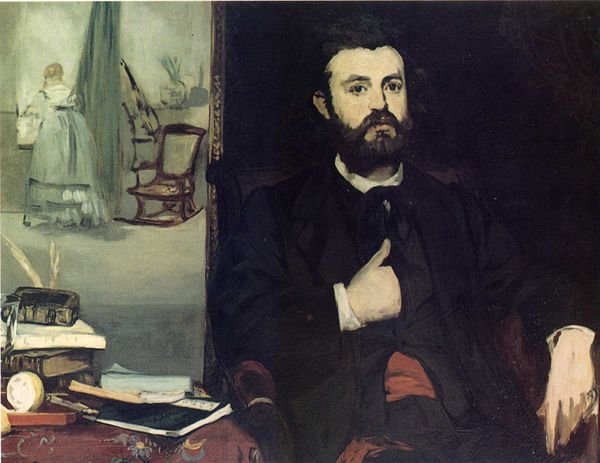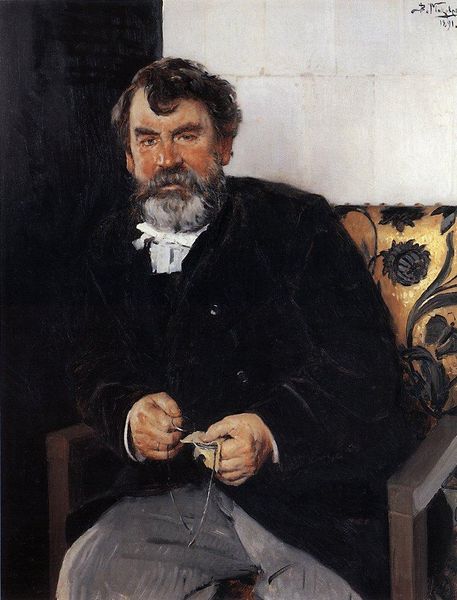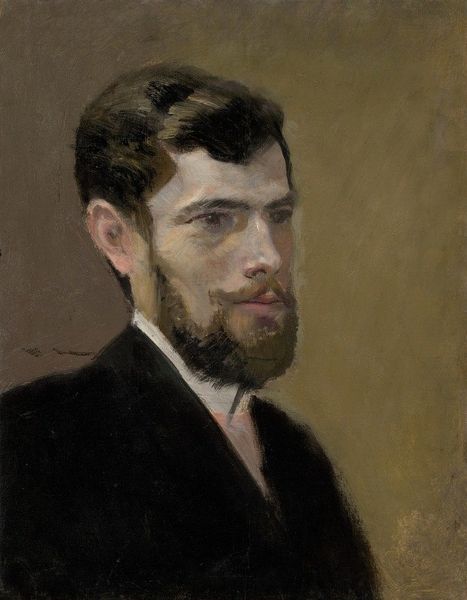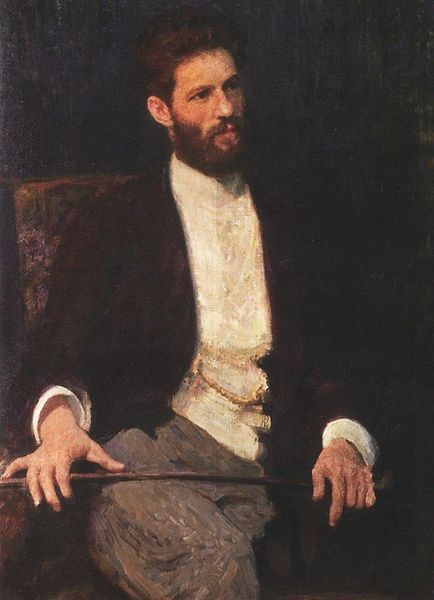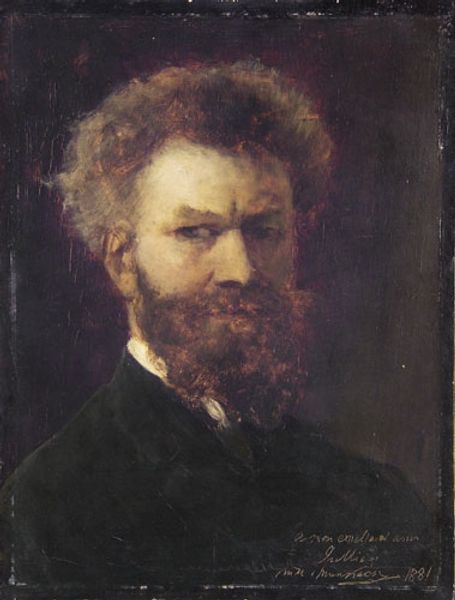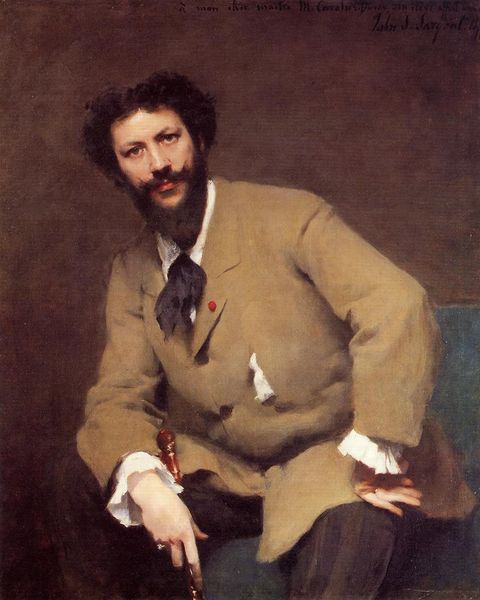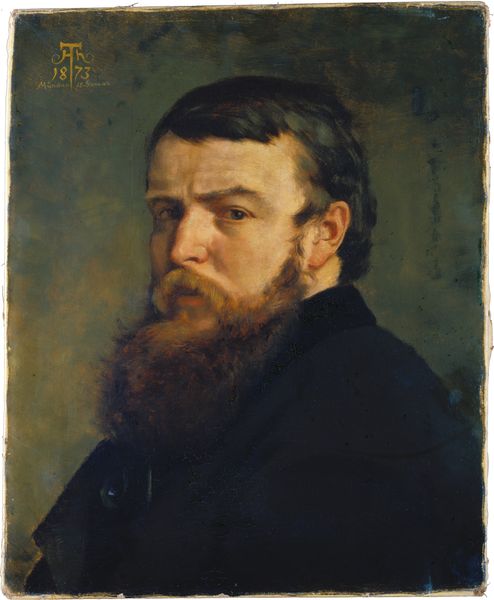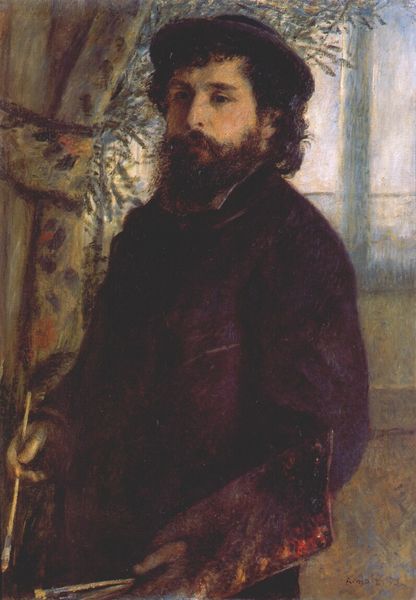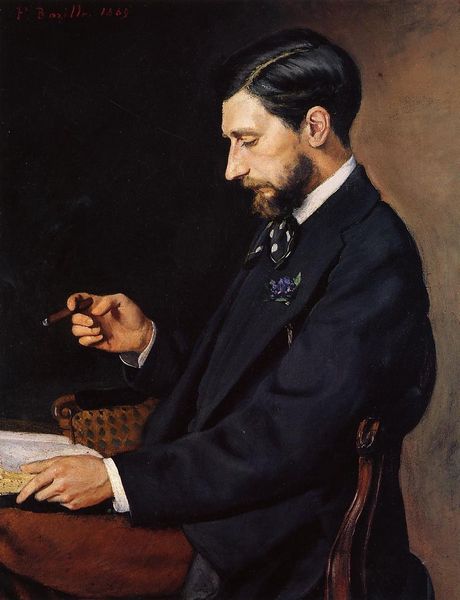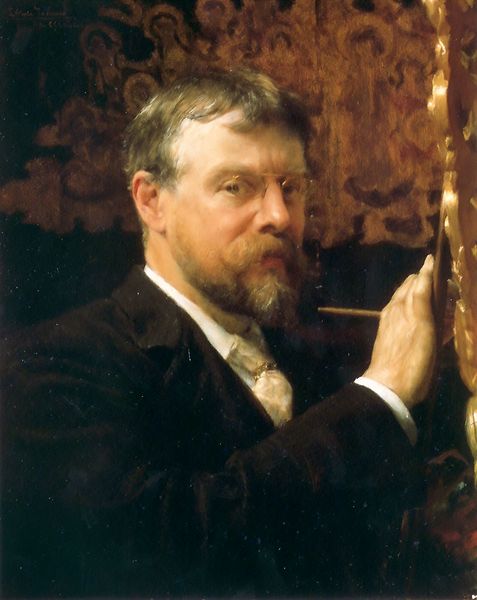
Copyright: Public domain
Lawrence Alma-Tadema painted this portrait of the singer George Henschel. Looking at Henschel, who's poised at the piano, we can see how the cultural elite was represented. The late 19th century was a time of great social change, but traditional class structures still influenced who got to be seen and celebrated in art. Alma-Tadema was known for his detailed depictions of domestic life and historical scenes; how does this painting fit into that pattern? Henschel, a German-born singer and composer who gained prominence in London, embodies the image of a cultivated, upper-class musician. The setting, with its ornate piano and decorative backdrop, speaks to a world of wealth and artistry. Consider the role of portraiture at the time. It was a way to immortalize and elevate individuals, often reinforcing existing social hierarchies. How does Alma-Tadema's portrayal of Henschel contribute to this tradition? It’s hard to deny the emotional weight this image carries, a testament to the artist’s skill in capturing the essence of his sitter.
Comments
No comments
Be the first to comment and join the conversation on the ultimate creative platform.
